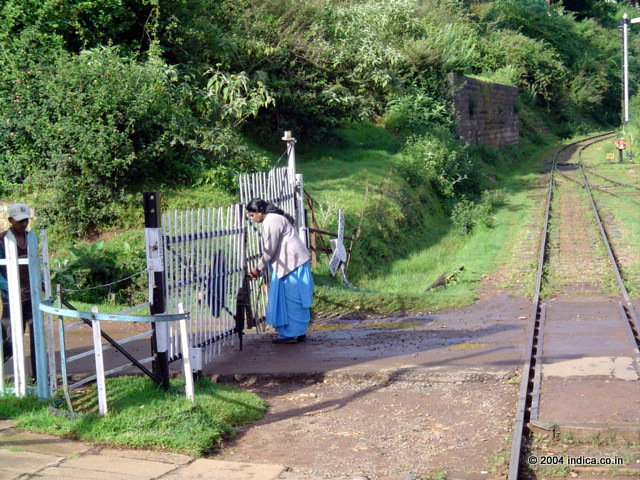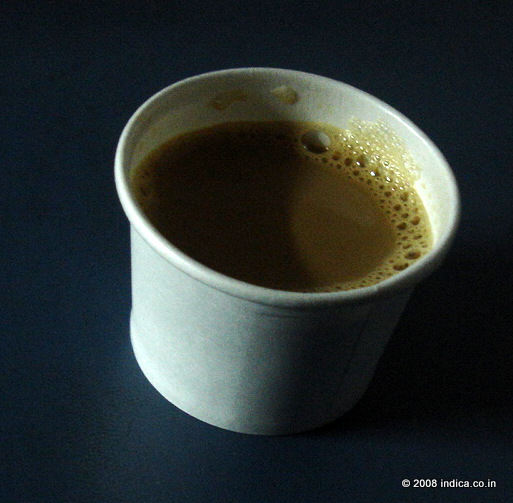Indian Train Journey
I
ndia is a mysteriously diverse country. As a society its character is unpredictable, structurally chaotic, very much intrusive, somewhat mischievous, a bit corrupt and tricky, unbelievably patient, pretty lethargic, inquisitive to the core, talkative to a point of insanity and obviously a lot noisy. A man on the road sees no reason why he should not talk to a total stranger passing by. At the end the curiosity wins! Now you put that inside a train. You get India in its rolling-stock version.Multiply it with the scale that is India. Indian Railways operate more than 14000 (yes, fourteen thousand) trains a day. If traveled towards moon, the distance covered by all these trains easily equals 4 times the journey to moon… that is in its every day operations. 16 million passengers (twice the population of London) travel by train daily.

With 1.6 million employs, Indian Railways looks more like an army. In fact it is the largest employer in the world, if one bar the armies from the contest.
Being that the backdrop, a train journey in India refuses to be just another uneventful and boring affair.
Every kinds of weirdness in India have already found its place in the railway stations and trains. So being inside the train doesn’t insulate you, no fear of that happening.
Everyone settled, the train just left the station, you think its time to do some reading and pulls out that gleaming magazine from your bag. Nothing unusual happens. You are wrong!
The vying eyes of your co passengers have already fallen on it. It is only a question of time you receive the first request for the magazine, with an ear-to-ear grin of course. Once it leaves you, the magazine slowly turns socialist. It changes many hands. In the beginning, you receive a gentle request for consent from your first borrower to pass it to his neighbor. That curtsey vanishes fast. What is the need to trouble you again since you didn’t show any reservations at all?
Many hours later, the magazine finally traces its way back to you. By now it would look like a tired but proud solder returning from the battlefield. Long gone is the sheen on its once gleaming cover. That is what happens three-dozen passengers on a train read a magazine in turns. If it happened to be a newspaper instead of a magazine, the fate is still brutal.
Don’t worry too much, if the whole thing sounds a bit odd or intrusive. Either you start liking it albeit with a disdain or refuse to carry a magazine onboard. Sure you can always do it on other passengers.
Of late are you getting that urge to pull gently at the corner of somebody else’s’ magazine? It just assures that by now you are already a seasoned train traveler in India!
A typical long distance train passes through many states. It is safe to assume that there are all having unique cultural identity. In other words, people speak different languages, wear different costumes and even the cuisine is different. It seems the train arrives at a different India every 500 kilometers or so. That diversity reflects inside the train too.
Take a long distance train connecting two particularly unique places. A great lot of the passengers in the train would be from these two regions. It is sometime amusing to watch the crowd who speaks different languages and possess considerable difference in taste.
In general Indians travel in family. Indian Railways have a rule, one cannot reserve for more than six in a group. Not very sure what was in their mind in setting this rule. Probably they though of preventing an entire village on the move reserve a coach and run their council meeting an Afghan style Loya Jirga.
If you happed to be in the middle of a traveling middleclass family, expect these: force-feeding you every time they open that box of home cooked food packets, in return they want to know where you are going? What you are doing? How much you earn?…..the list is as long as your journey.
First of all you are in a fix. You’ve seen a poster round the corner that conmen use biscuits and soft drinks to drug unsuspecting passengers to rob. The railways have been repeatedly advising people not to accept food or drinks from strangers while traveling. Also somewhere you’ve red that saying a polite “No Thanks” could be considered as a rude statement in India. In this dilemma your prudence fight with curtsey. Commonsense overrides all alarms. Curtsey wins, usually!
Well, so far we’ve been talking about the reserved coaches. What about the unnerved coaches at the ends of the train? To be frank, that is a different republic altogether.
This is where the so-called real India travels (as if the rest of India is not so real!). Albeit its lack of luxury and comforts, the unreserved coaches and the slow passenger trains are definitely showcases of India’s diversity, patience, flexibility, humility and more importantly its simplicity.
Where on earth one can travel a thousand miles for as low as Rs250 (5 USD) by an express train?
No vulgar display of pomp and vanity here. If you equate the higher classes with upscale hotels, the second-class coaches compare with those downtown lodges where one can walk in. It has character. If you still have stamina left, welcome inside. It won’t be boring, sure!
If one feels India handles paradoxes with ease, look at the Indian railways to watch the climax. This never sleeping conglomerate uses satellites technologies to monitor and track its trains. Walk into their luggage booking office; the centerpiece would be a Victorian era weighing scale. The clerk sitting next to it is no less colonial either. He jots a luggage receipt for your bicycle in quadruple using three layers of carbon papers. You’ve already got the weight measured by the assistant standing next to the scale. Now you stand in the queue to pay the luggage charges. Again the clerk takes his sweet time to fill the rows and columns of an ancient looking ledger system. Proudly in display is the railway’s beaurocrasy at its slowest best.
Right next to it is the reservation office. Tens of thousands of computers are connected to the railways mission critical reservation system. If works with amazing efficiency that can make any giant airlines in the world turn green with envy. It may look trivial in the modern world of online ticket bookings. But the scale at which the railway is operating is mind-boggling. This single organization’s e-tickets sale accounts for about 30% of the whole online purchases made in India.
Let it be the heroin falls in love with hero, or the bandits looting a train or even the partition of India and Pakistan, countless number of Indian movies - Bollywood or otherwise- are made in the backdrop of train journeys.
Having boasted of its sophistication, the century old coal and steam trains are no history in India. If one is keen to travel in steam engine trains, Indian railways have a few trains in its rolling inventory.
Three legacy railways Darjeeling Himalayan Railway, Kalka-Shimla Railway and the Nilgiri Mountain Railway marched into the UNESCO listed World Heritage Site on in cultural value for the humanity. These mountain trains of India still have enough steam left to bring the kid out of you. It is very difficult to hold the scream as the smoke spitting Nilgiri mountain train disappears into a dark tunnel.
No talk on Indian trains is conclusive without the mention of the cuisine. While some dishes are known after Indian railways, the humble Chai stands top in the list.
Literally hundreds of Chai vendors mob the trains from inside and outside. Kettle after kettle of tea finds its way through the windows into the coaches. It seams even the paper cups across the country is designed make it slip easily through the window grills.
India is a mysteriously diverse country. As a society its character is unpredictable, structurally chaotic, very much intrusive, somewhat mischievous, a bit corrupt and tricky, unbelievably patient, pretty lethargic, inquisitive to the core, talkative to a point of insanity and obviously a lot noisy. A man on the road sees no reason why he should not talk to a total stranger passing by. At the end the curiosity wins! Now you put that inside a train. You get India in its rolling-stock version.

Multiply it with the scale that is India. Indian Railways operate more than 14000 (yes, fourteen thousand) trains a day. If traveled towards moon, the distance covered by all these trains easily equals 4 times the journey to moon… that is in its every day operations. 16 million passengers (twice the population of London) travel by train daily.
With 1.6 million employs, Indian Railways looks more like an army. In fact it is the largest employer in the world, if one bar the armies from the contest.
Being that the backdrop, a train journey in India refuses to be just another uneventful and boring affair.
Every kinds of weirdness in India have already found its place in the railway stations and trains. So being inside the train doesn’t insulate you, no fear of that happening.
Everyone settled, the train just left the station, you think its time to do some reading and pulls out that gleaming magazine from your bag. Nothing unusual happens. You are wrong!
The vying eyes of your co passengers have already fallen on it. It is only a question of time you receive the first request for the magazine, with an ear-to-ear grin of course. Once it leaves you, the magazine slowly turns socialist. It changes many hands. In the beginning, you receive a gentle request for consent from your first borrower to pass it to his neighbor. That curtsey vanishes fast. What is the need to trouble you again since you didn’t show any reservations at all?
Many hours later, the magazine finally traces its way back to you. By now it would look like a tired but proud solder returning from the battlefield. Long gone is the sheen on its once gleaming cover. That is what happens three-dozen passengers on a train read a magazine in turns. If it happened to be a newspaper instead of a magazine, the fate is still brutal.
Don’t worry too much, if the whole thing sounds a bit odd or intrusive. Either you start liking it albeit with a disdain or refuse to carry a magazine onboard. Sure you can always do it on other passengers.
Of late are you getting that urge to pull gently at the corner of somebody else’s’ magazine? It just assures that by now you are already a seasoned train traveler in India!
A typical long distance train passes through many states. It is safe to assume that there are all having unique cultural identity. In other words, people speak different languages, wear different costumes and even the cuisine is different. It seems the train arrives at a different India every 500 kilometers or so. That diversity reflects inside the train too.
Take a long distance train connecting two particularly unique places. A great lot of the passengers in the train would be from these two regions. It is sometime amusing to watch the crowd who speaks different languages and possess considerable difference in taste.
In general Indians travel in family. Indian Railways have a rule, one cannot reserve for more than six in a group. Not very sure what was in their mind in setting this rule. Probably they though of preventing an entire village on the move reserve a coach and run their council meeting an Afghan style Loya Jirga.
If you happed to be in the middle of a traveling middleclass family, expect these: force-feeding you every time they open that box of home cooked food packets, in return they want to know where you are going? What you are doing? How much you earn?…..the list is as long as your journey.
First of all you are in a fix. You’ve seen a poster round the corner that conmen use biscuits and soft drinks to drug unsuspecting passengers to rob. The railways have been repeatedly advising people not to accept food or drinks from strangers while traveling. Also somewhere you’ve red that saying a polite “No Thanks” could be considered as a rude statement in India. In this dilemma your prudence fight with curtsey. Commonsense overrides all alarms. Curtsey wins, usually!
Well, so far we’ve been talking about the reserved coaches. What about the unnerved coaches at the ends of the train? To be frank, that is a different republic altogether.
This is where the so-called real India travels (as if the rest of India is not so real!). Albeit its lack of luxury and comforts, the unreserved coaches and the slow passenger trains are definitely showcases of India’s diversity, patience, flexibility, humility and more importantly its simplicity.
Where on earth one can travel a thousand miles for as low as Rs250 (5 USD) by an express train?
No vulgar display of pomp and vanity here. If you equate the higher classes with upscale hotels, the second-class coaches compare with those downtown lodges where one can walk in. It has character. If you still have stamina left, welcome inside. It won’t be boring, sure!
If one feels India handles paradoxes with ease, look at the Indian railways to watch the climax. This never sleeping conglomerate uses satellites technologies to monitor and track its trains. Walk into their luggage booking office; the centerpiece would be a Victorian era weighing scale. The clerk sitting next to it is no less colonial either. He jots a luggage receipt for your bicycle in quadruple using three layers of carbon papers. You’ve already got the weight measured by the assistant standing next to the scale. Now you stand in the queue to pay the luggage charges. Again the clerk takes his sweet time to fill the rows and columns of an ancient looking ledger system. Proudly in display is the railway’s beaurocrasy at its slowest best.
Right next to it is the reservation office. Tens of thousands of computers are connected to the railways mission critical reservation system. If works with amazing efficiency that can make any giant airlines in the world turn green with envy. It may look trivial in the modern world of online ticket bookings. But the scale at which the railway is operating is mind-boggling. This single organization’s e-tickets sale accounts for about 30% of the whole online purchases made in India.
Let it be the heroin falls in love with hero, or the bandits looting a train or even the partition of India and Pakistan, countless number of Indian movies - Bollywood or otherwise- are made in the backdrop of train journeys.
Having boasted of its sophistication, the century old coal and steam trains are no history in India. If one is keen to travel in steam engine trains, Indian railways have a few trains in its rolling inventory.
Three legacy railways Darjeeling Himalayan Railway, Kalka-Shimla Railway and the Nilgiri Mountain Railway marched into the UNESCO listed World Heritage Site on in cultural value for the humanity. These mountain trains of India still have enough steam left to bring the kid out of you. It is very difficult to hold the scream as the smoke spitting Nilgiri mountain train disappears into a dark tunnel.
No talk on Indian trains is conclusive without the mention of the cuisine. While some dishes are known after Indian railways, the humble Chai stands top in the list.
Literally hundreds of Chai vendors mob the trains from inside and outside. Kettle after kettle of tea finds its way through the windows into the coaches. It seams even the paper cups across the country is designed make it slip easily through the window grills.

Guard closes the gate, before the train leaves the station.
Guard closes the gate, before the train leaves the station. This is on the way to Ooty by the Nilgiri Mountain Railway.

Coffee supplied in in Indian Trains
Coffee in Indian Train
